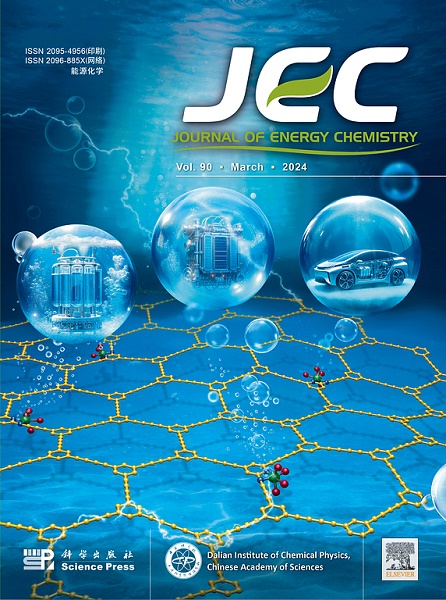Leveraging the knee point: boosting remaining useful life prediction accuracy for lithium-ion batteries with virtual-enhanced normalizing flow
IF 13.1
1区 化学
Q1 Energy
引用次数: 0
Abstract
Deep learning has emerged as a powerful tool for predicting the remaining useful life (RUL) of batteries, contingent upon access to ample data. However, the inherent limitations of data availability from traditional or accelerated life testing pose significant challenges. To mitigate the prediction accuracy issues arising from small sample sizes in existing intelligent methods, we introduce a novel data augmentation framework for RUL prediction. This framework harnesses the inherent high coincidence of degradation patterns exhibited by lithium-ion batteries to pinpoint the knee point, a critical juncture marking a significant shift in the degradation trajectory. By focusing on this critical knee point, we leverage the power of normalizing flow models to generate virtual data, effectively augmenting the training sample size. Additionally, we integrate a Bayesian Long Short-Term Memory network, optimized with Box-Cox transformation, to address the inherent uncertainty associated with predictions based on augmented data. This integration allows for a more nuanced understanding of RUL prediction uncertainties, offering valuable confidence intervals. The efficacy and superiority of the proposed framework are validated through extensive experiments on the CS2 dataset from the University of Maryland and the CrFeMnNiCo dataset from our laboratory. The results clearly demonstrate a substantial improvement in the confidence interval of RUL predictions compared to pre-optimization, highlighting the ability of the framework to achieve high-precision RUL predictions even with limited data.

利用膝点:通过虚拟增强的正态流提高锂离子电池的剩余使用寿命预测精度
深度学习已经成为预测电池剩余使用寿命(RUL)的强大工具,这取决于对充足数据的访问。然而,传统或加速寿命测试数据可用性的固有局限性带来了重大挑战。为了缓解现有智能方法中样本量小所带来的预测精度问题,我们引入了一种新的数据增强框架用于RUL预测。该框架利用锂离子电池固有的高度重合的降解模式来精确定位膝盖点,这是一个标志着降解轨迹重大转变的关键节点。通过关注这个关键的拐点,我们利用归一化流模型的力量来生成虚拟数据,有效地增加了训练样本的大小。此外,我们整合了一个贝叶斯长短期记忆网络,优化了Box-Cox变换,以解决与基于增强数据的预测相关的固有不确定性。这种集成允许对规则预测的不确定性有更细致的理解,提供有价值的置信区间。通过马里兰大学CS2数据集和实验室CrFeMnNiCo数据集的大量实验,验证了该框架的有效性和优越性。结果清楚地表明,与预优化相比,RUL预测的置信区间有了实质性的改进,突出了该框架即使在有限的数据下也能实现高精度RUL预测的能力。
本文章由计算机程序翻译,如有差异,请以英文原文为准。
求助全文
约1分钟内获得全文
求助全文
来源期刊

Journal of Energy Chemistry
CHEMISTRY, APPLIED-CHEMISTRY, PHYSICAL
CiteScore
19.10
自引率
8.40%
发文量
3631
审稿时长
15 days
期刊介绍:
The Journal of Energy Chemistry, the official publication of Science Press and the Dalian Institute of Chemical Physics, Chinese Academy of Sciences, serves as a platform for reporting creative research and innovative applications in energy chemistry. It mainly reports on creative researches and innovative applications of chemical conversions of fossil energy, carbon dioxide, electrochemical energy and hydrogen energy, as well as the conversions of biomass and solar energy related with chemical issues to promote academic exchanges in the field of energy chemistry and to accelerate the exploration, research and development of energy science and technologies.
This journal focuses on original research papers covering various topics within energy chemistry worldwide, including:
Optimized utilization of fossil energy
Hydrogen energy
Conversion and storage of electrochemical energy
Capture, storage, and chemical conversion of carbon dioxide
Materials and nanotechnologies for energy conversion and storage
Chemistry in biomass conversion
Chemistry in the utilization of solar energy
 求助内容:
求助内容: 应助结果提醒方式:
应助结果提醒方式:


